Last Updated on 15.11.2024 by hrushetskyy

A tire’s speed rating is an essential specification that indicates the maximum speed a properly inflated tire can safely handle under its recommended load. This rating is found on the tire’s sidewall, at the end of the alphanumeric size sequence, and is represented by a specific letter, from A1 to Y. Each letter corresponds to a particular speed limit.
We strongly recommend always selecting tires with the speed rating specified by the manufacturer. Decoding it is super easy. Let’s learn how!
What is a tire speed rating + shocking statistics
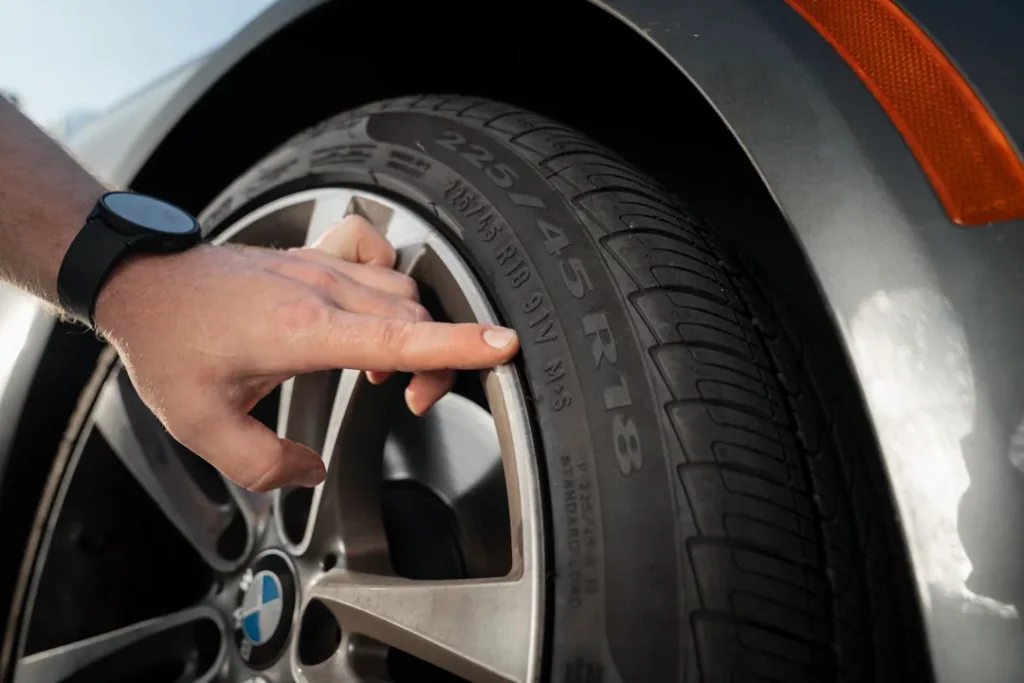
Each car has its own characteristics. It drives at certain speeds and can carry specific loads. To determine which tires are most suitable for the job, an essential standardized measurement—the tire speed rating—is used. This rating is assigned based on rigorous testing by tire manufacturers and official bodies like the International Organization for Standardization (ISO) and the American Society for Testing and Materials (ASTM).
Speed lettering was introduced in the 1960s by European engineers as a standardized way to indicate and manage the speed capabilities of cars for their owners. Initially, tire speed ratings included only three categories: S, H, and V. The letter H was uniquely retained to represent 130 mph, allowing for compatibility with older tire models still in use.
As tire technology advanced and new speed categories were required, the rating system expanded to cover nearly the entire alphabet. The lowest rating, A1, corresponds to a speed limit of 3 mph, which is why most speed rating charts skip the first few letters. Typically, they display ratings from L (75 mph) to Y (186 mph).
According to a study by the National Highway Traffic Safety Administration (NHTSA), matching tire speed ratings to the vehicle type and manufacturer’s recommendations can reduce tire-related accidents by up to 20%!
Tires unsuitable for the intended speed can significantly increase the risk of accidents.
Tire speed rating chart
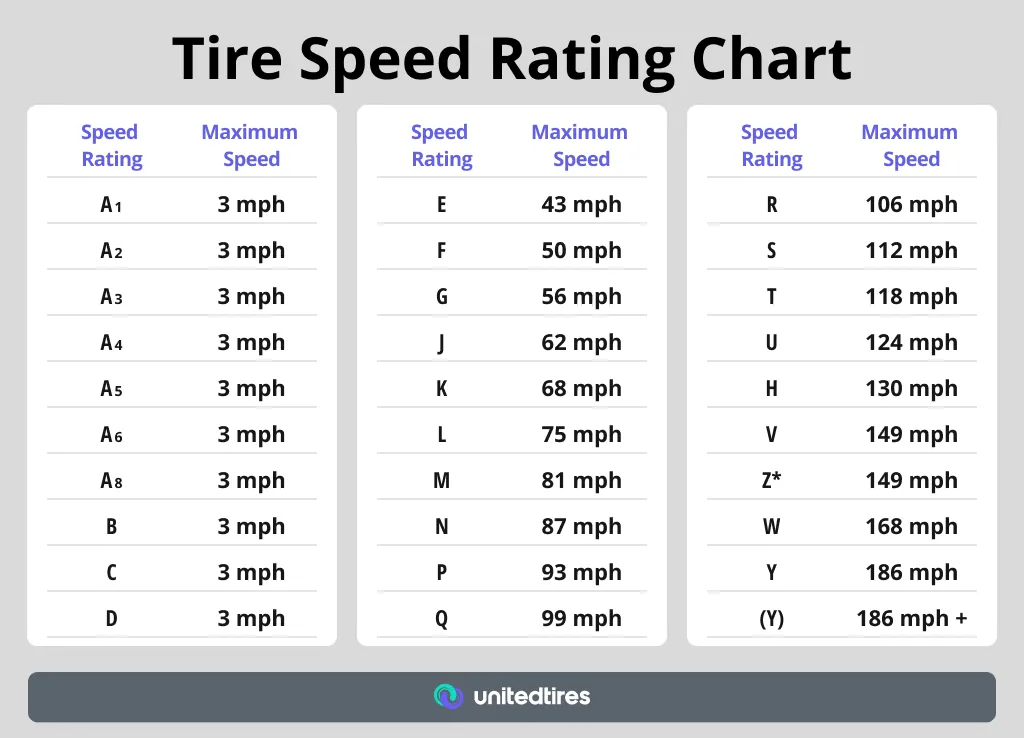
The tire speed rating is represented by letters at the end of the character sequence of the tire’s size code on the sidewall. For example, in the size “225/50R17 94V,” the “V” stands for the speed rating.
To simplify identifying speed limits for your tires, refer to the tire speed rating chart. It shows speed ratings in ascending alphabetical order, each representing a higher maximum speed that your tire can withhold while properly inflated, with a particular load capacity.
Here, you see a list of letters (L, M, N, P, Q, R, S, T, U, H, V, W, Y) with the maximum speed capability next to them. The maximum speed is the fastest speed a tire can operate safely for extended periods, including the heat and stress that come with it. A tire with an “H” speed rating can handle speeds up to 130 mph, while a “V” rated tire can manage up to 149 mph.
Use the table below or simply remember the letter specified in your car owner’s manual.
Note: The “Z” rating is often followed by W or Y to denote higher speeds. Certain designations, such as ZR and Y, must be included for tires with a maximum speed capacity above 186 mph.
Here are some of the irregularities to know about when reading speed ratings:
- The “H” rating stands between the “U” and the “V,” not after the “G.” The rating’s speed corresponds to its position.
- There are no “I,” “O,” or “X” ratings. There are also charts that exclude the “P” rating.
- The lowest ratings are “A1”, “A2, and “A3”.
- For the “W” and “Y” ratings, some manufacturers include “Z” into the tire side code after the aspect ratio.
Example: a tire size sequence breakdown
- 225: Tire width in millimeters.
- 50: Aspect ratio (height of the sidewall as a percentage of the tire’s width).
- R: Radial construction.
- 17: Wheel diameter in inches.
- 94: Load index.
- V: Speed rating.
NOTE: Always consult your vehicle’s owner’s manual or the manufacturer’s guidelines to determine the recommended speed rating for your tires. This information is critical to keeping your ride safe!
Why speed rating is important?
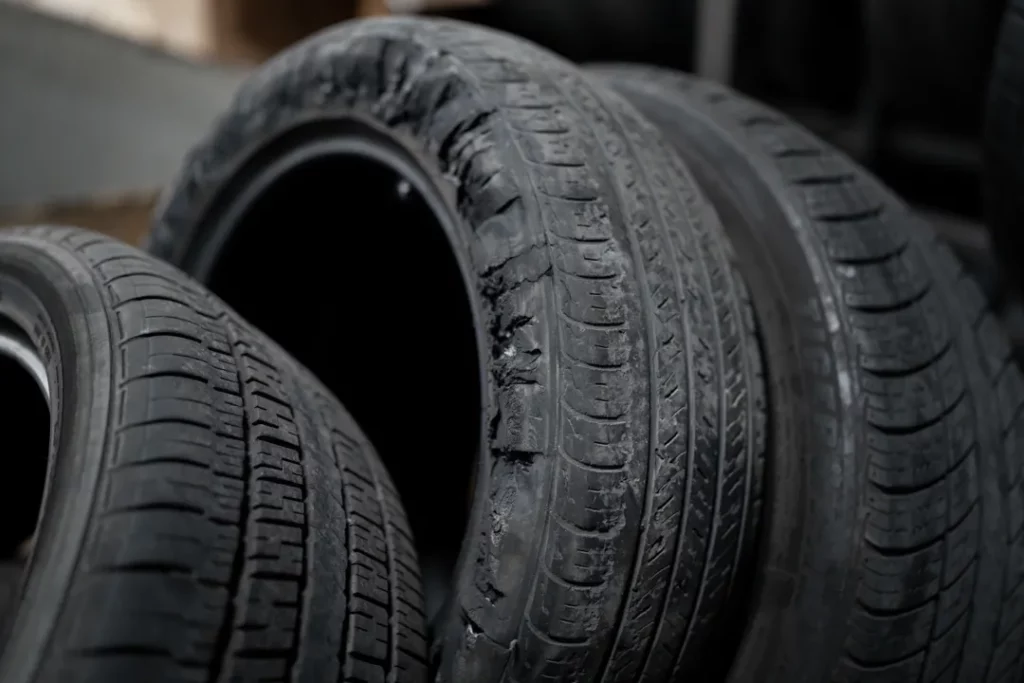
Safety
Choosing a tire with the appropriate speed rating for your vehicle is essential for the safety of you, your passengers and everybody else on the road. Using tires with a lower-than-recommended speed rating can lead to overheating, tire failure, and loss of control.
Performance

Speed ratings are not just about maximum speed; they also provide insight into the tire’s overall performance characteristics. A higher speed-rated tire typically offers better handling, traction, and braking performance.
Vehicle compatibility
Using tires with the speed rating specified by your vehicle manufacturer guarantees that all vehicle components, including suspension, braking, and steering systems, work harmoniously. This compatibility is essential for maintaining the vehicle’s designed performance levels.
Where to find the tire’s speed rating?
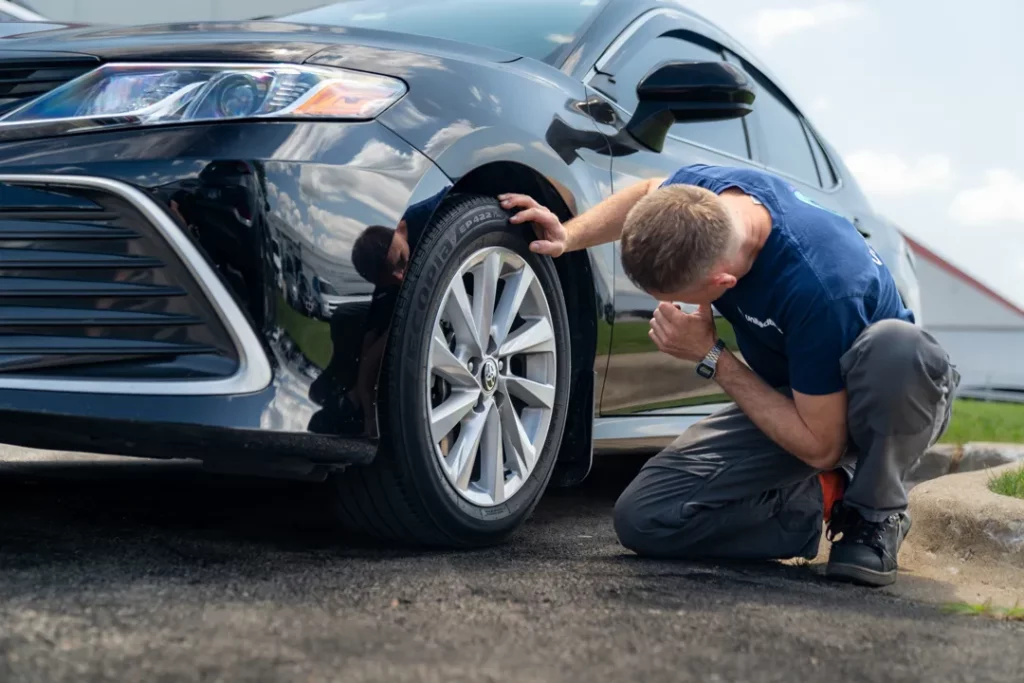
1. Tire sidewall
You can easily find the speed rating on a tire’s sidewall as part of its size designation.
Example:
- 225: Tire width in millimeters
- 50: Aspect ratio (height of the sidewall as a percentage of the tire’s width)
- R: Radial construction
- 17: Wheel diameter in inches
- 94: Tire’s load index number
- V: Speed rating
2. Car owner’s manual

The owner’s manual has all the information you need about the recommended tires for your vehicle. Information placards on the door jamb, glove box door, and gas tank hatch are for when you need a quick recommendation while on the go. As for the tire codes, you will see a speed rating for the particular tire. There will be no vehicle-related recommendations, so it would be wise to consult both the vehicle manufacturer’s suggestions and check the markings on the tires.
3. Tire manufacturer’s website and brochures
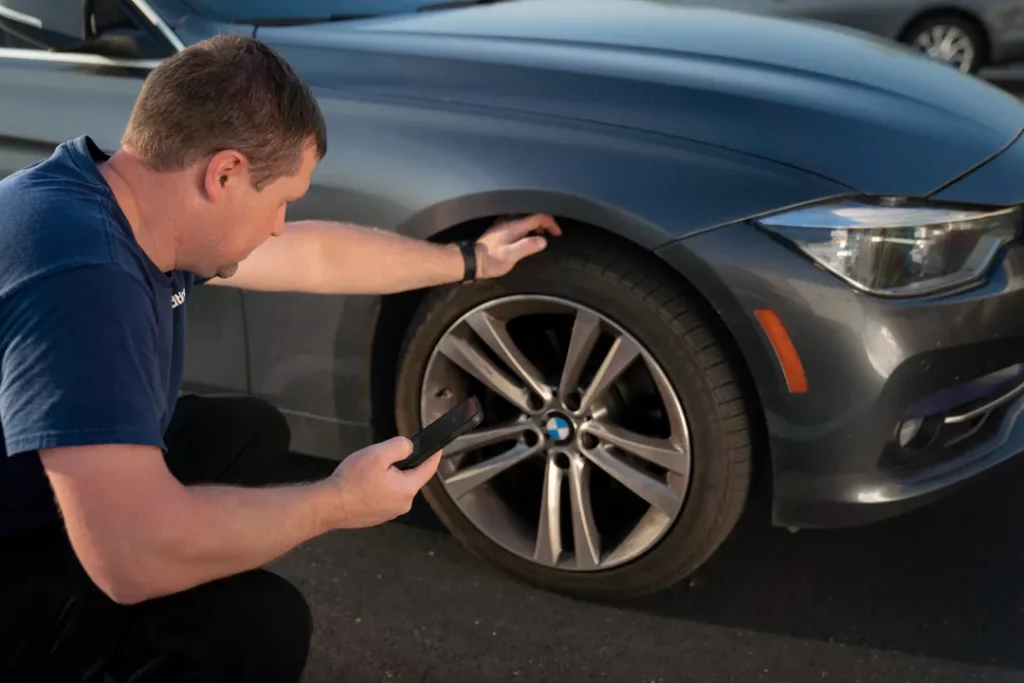
Most tire manufacturers provide detailed information about their tires, including speed ratings, on their websites and in product brochures. These resources often include additional performance data, reviews, and ratings that can help you make a well-informed decision.
4. Tire retailers
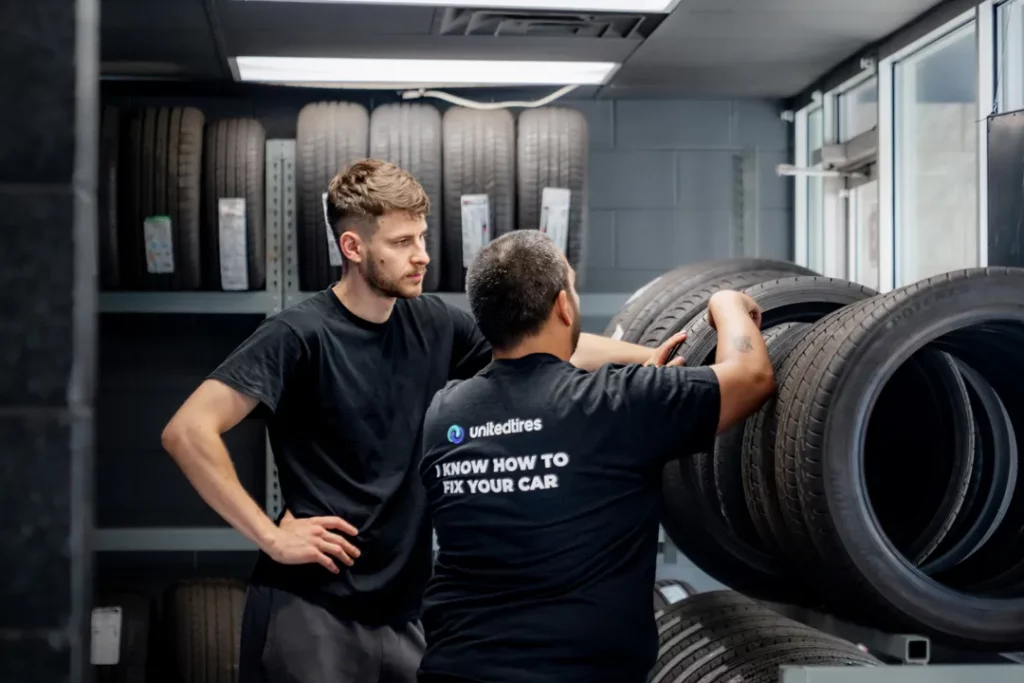
Professional tire retailers and service centers can provide guidance on selecting the appropriate speed rating for your vehicle. They often have access to databases and resources that can cross-reference your vehicle’s specifications with available tire options.
How does a tire get a rating?

Tires get the ratings according to the results of the tests where speeds and loads are simulated. In brief, a specialist inflates a tire to the recommended pressure and puts it into a large drum. It then rotates the tested tire, increasing speeds by 6.2 mph every 10 minutes. As the rotation reaches the estimated maximum speed for the tire, the specialist checks whether the tire keeps its integrity. The load-carrying capacity is also tested to ensure the tire can sustain the maximum weight when inflated correctly.
The conditions for the tests are perfect, so special road/environment-related conditions aren’t included. That’s why the tire’s actual maximum speed is often lower than its speed rating. If the tire is even slightly underinflated, the vehicle is overloaded, or it’s boiling hot outside, the ratings may become irrelevant.
Testing process step-by-step
- Preparation: Tires are mounted on test wheels and inflated to their recommended pressure
- Loading: A tire is subjected to a specific load that it is designed to carry
- Speed increment testing: The tire is then run on a testing machine at gradually increasing speeds. These speeds are held for defined periods to simulate real-world driving conditions
- Heat generation: This is a critical factor in testing a tire’s performance at high speeds
- Failure point: The test continues until the tire reaches its designated maximum speed or fails. If the tire successfully sustains its maximum rated speed without failure, it earns that particular speed rating.
According to a Tire and Rim Association (TRA) study, over 95% of tires pass their initial speed rating tests, with only a small fraction requiring redesign or additional reinforcement.
Tire type and speed rating
Tires come in various types, each designed to meet specific performance requirements and conditions. A tire’s speed rating is closely linked to its type, dictated by its construction, materials, and intended use. The top speed rating Y indicates that a properly inflated tire with a proper load can go as fast as 186 mph!
According to a report by the Tire and Rim Association (TRA), approximately 60% of all new passenger vehicle tires are equipped with all-season tires with moderate speed ratings (S to H).
High-performance vehicles, constituting about 20% of the market, often use tires with higher speed ratings (V and above).
Common tire speed ratings
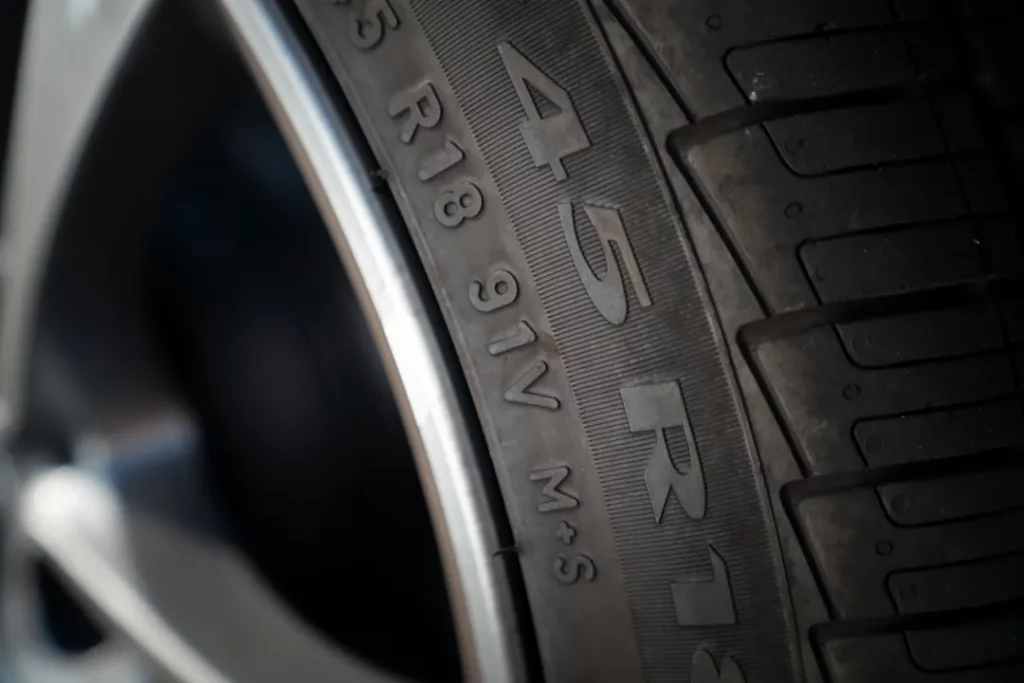
- All-season tires — “S” and “T”
- All-season truck tires — “S,” “T,” and “H”
- All-season SUV (sport utility vehicles) — “T” and “H”
- Summer tires — “V,” “W,” and “Y”
- Performance all-season tires — “H” and “V”
- Ultra-high performance tires — “ZR,” “W,” and “Y”
- Performance winter tires — “H” and higher
- All-terrain off-road tires — “L” to “S”
- Highway terrain tires — “T” or “H”
- Winter/snow tires — “Q” and higher
- Truck winter tires — “S”
- Temporary spare tires — “M”
The type of tire you choose directly influences its speed rating.
Family vans and sedans pair well with S- or T-rated tires, while sedans and coupes typically get sufficient speed from U-rated tires. Sport sedans and coupes can benefit from H- or V-rated tires. Exotic sports cars are best suited for the high-speed capability of W-, Y-, and (Y)-rated tires. Heavy-duty light trucks should use R-rated tires.
Performance tires, designed for high-speed conditions, generally have higher speed ratings. The rubber compound used in performance tires is softer for better grip, impacting the speed rating. Performance tires have tread designs optimized for high-speed stability, whereas all-terrain tires have aggressive tread patterns for off-road grip. Tires capable of exceeding 300 km/h (186 mph) must have specific designations and descriptions according to industry standards.
Conversely, tires intended for off-road or winter conditions prioritize grip and durability over speed, resulting in lower speed ratings.
Due to the additional load and off-road capabilities, heavy-duty trucks and SUVs may require tires with lower speed ratings, like Q (99 mph).
Light trucks and SUVs often use all-terrain or highway terrain tires. Their speed ratings typically range from Q (99 mph) to H (130 mph), depending on their intended use.
Electric vehicles require tires that can handle instant torque and additional weight from battery packs. These tires typically have higher speed ratings to accommodate performance needs and range optimization.
Before choosing a tire based on these examples, consult your owner’s manual for the manufacturer’s recommendations. Remember, the higher the tire’s load index number, the greater its load-carrying capacity—an essential factor when selecting the right tire.
8 aspects that the speed rating influences aside from the speed itself

1. Heat build-up
Tires with lower ratings flex harder under pressure, which causes heat build-up. It may cause a wide range of issues, from premature aging to tire failure and immediate blowouts. Tires with higher ratings have special compounds and reinforcements that help avoid excess heat build-up.
The Y speed symbol is crucial for tires with maximum speed capabilities exceeding 186 mph.
2. Braking
Low-rated tires will stop for a longer amount of time as they change shape and squirm during hard braking. Take two-speed ratings, S and V tires, and ride them at 100 km/h. As the V tire comes to a full stop, the S tire still goes at about 25 km/h. The difference in braking distance turns out to be about 4 m (about 13 ft) in this case, but this difference will play a big role when talking about emergency braking.
For tires with a maximum speed capacity above 300 km/h, a ‘ZR’ label must be included in the size designation, alongside a service description that features the Y speed symbol.
3. Cornering grip
Just as a low-rated tire will deform when braking, it will when cornering. The contact patch area also changes shape during hard turns, worsening the grip. Heat-up may follow and add to the condition.
4. Steering responsiveness
Less flex and the overall construction of tires with a higher speed rating will make your vehicle more responsive. So, you won’t have to turn the steering wheel more and wait for your tires’ reaction. Lower ratings also perform well and are responsive, but only at the speeds they are designed for.
Speed ratings are often called performance ratings, as they influence most aspects of traction and responsiveness. For better speed handling, the construction of the tire has to be improved. That’s why high-rated tires are considered higher in quality. Low-rated tires are still useful for vehicles with capacities matching those tires. That’s why buying a sports low-profile tire with a Y rating isn’t recommended if you need a regular H-rated tire.
5. Handling and traction
Higher-speed-rated tires often provide better handling and traction, especially in high-speed situations. This is due to their stiffer construction and specialized rubber compounds designed to perform well at higher speeds.
6. Ride comfort
On the flip side, tires with higher speed ratings might offer a slightly firmer ride due to their stiffer construction.
7. Tire longevity and wear
Higher-speed-rated tires are usually made from softer compounds for better grip, which may wear out quicker than lower-speed-rated tires. However, this trade-off can be worth it for the performance and safety benefits.
8. Safety
Speed ratings directly impact your vehicle’s safety. Tires with higher speed ratings are constructed to handle the heat and stress associated with higher speeds. Using a tire with a lower speed rating than recommended can lead to overheating, tread separation, and, ultimately, tire failure, which is hazardous.
Why is it important to know your tires’ speed limit?

Understanding how speed ratings work is essential for selecting the right tires for your vehicle. The tire type—be it all-season, performance, or all-terrain—affects the speed rating, which in turn influences safety, performance, and longevity. Similarly, the type of vehicle you drive—whether it’s a sedan, sports car, truck, or EV—determines the appropriate speed rating for optimal performance and safety.
Choose wisely, and have a pleasant and safe ride!
Frequently Asked Questions
What speed rating should I choose?
The most appropriate choice is usually found in your owner’s manual. Another safe option is to buy your new tire set using the same size, load, speed rating, etc., as your original one. However, you can opt for a higher speed rating if you experience extreme weather conditions or poor roads in your area. Downgrading your tires is strongly discouraged, as it can reduce maximum speed and performance, potentially putting you and your vehicle at risk.
Can I mix tires with different speed ratings?
We strongly don’t recommend doing so. However, if you have to use different tires for some time, mount them in pairs on the axles. The pairs must be of the same rating, and it’s best if the lower-rated pair is on the front axle. This will help avoid oversteering. Remember that in this case, your vehicle will be limited according to the rating of the lower-rated tires.
What speed ratings are the best for my off-road vehicle?
Speed isn’t the first priority for regular off-road vehicles—traction is. Usually, L-rated tires are recommended, but the rating may be higher depending on the vehicle’s model. Off-road tires are reinforced no matter the rating. So, stick to the manufacturer’s recommendations unless you have a sports truck and need more speed.
Are higher speed indexes better?
Yes, but only within the appropriate range for your type of vehicle. You may want to consider a higher rating if you often drive loaded at highway speeds and it’s hot in your area. But if you mostly drive in a city where there are speed restrictions, you may want to stay closer to the bottom of the suitable indexes. Tires with higher speed capabilities usually cost more, so if you don’t need them, there’s no sense in spending more.
Is the speed rating important for winter tires?
Yes, it’s important for all tires, but winter ones are an exception to the “no downgrade” rule. You can install tires with a slightly lower rating than your original tires. This is because, in winter, people usually drive at slower speeds, so these capabilities become less relevant. The “T” rating is the most regular and frequently used in snow tires.
Share the Knowledge
